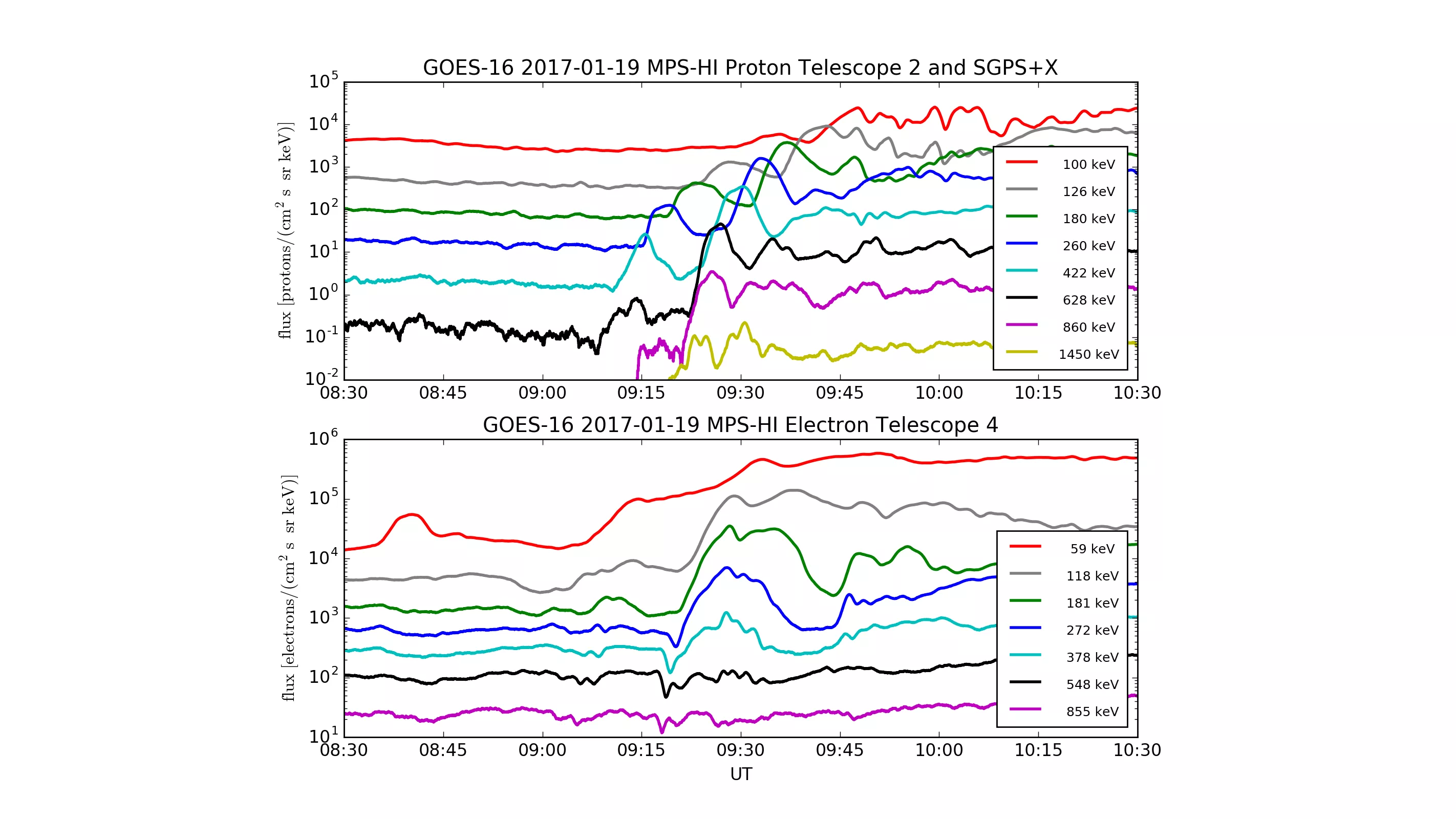
The new Space Environment In‐Situ Suite (SEISS) instrument onboard NOAA’s GOES-16 is working and successfully sending data back to Earth!
This plot shows how fluxes of charged particles increased over a few minutes around the satellite on January 19, 2017. These particles are often associated with brilliant displays of aurora borealis at northern latitudes and australis at southern latitudes; however, they can pose a radiation hazard to astronauts and other satellites, and threaten radio communications.
Information from SEISS will help NOAA's Space Weather Prediction Center provide early warning of these high flux events, so astronauts, satellite operators and others can take action to protect lives and equipment.
SEISS is composed of five energetic particle sensor units. The SEISS sensors have been collecting data continuously since January 8, 2017, with an amplitude, energy and time resolution that is greater than earlier generations of NOAA’s geostationary satellites.
SEISS was built by Assurance Technology Corporation and its subcontractor, the University of New Hampshire. Learn more about the SEISS instrument.
